Key takeaways:
- Climate anxiety can serve as a catalyst for action, transforming feelings of despair into empowerment through community engagement and activism.
- Environmental education is crucial for fostering responsibility and critical thinking about individual choices and collective action towards sustainability.
- Implementing small, manageable actions, mindfulness, and connecting with nature can help reduce anxiety and create a sense of purpose in addressing climate change.
- Engaging with local and online support groups can provide relief, motivation, and valuable connections for individuals grappling with climate anxiety.
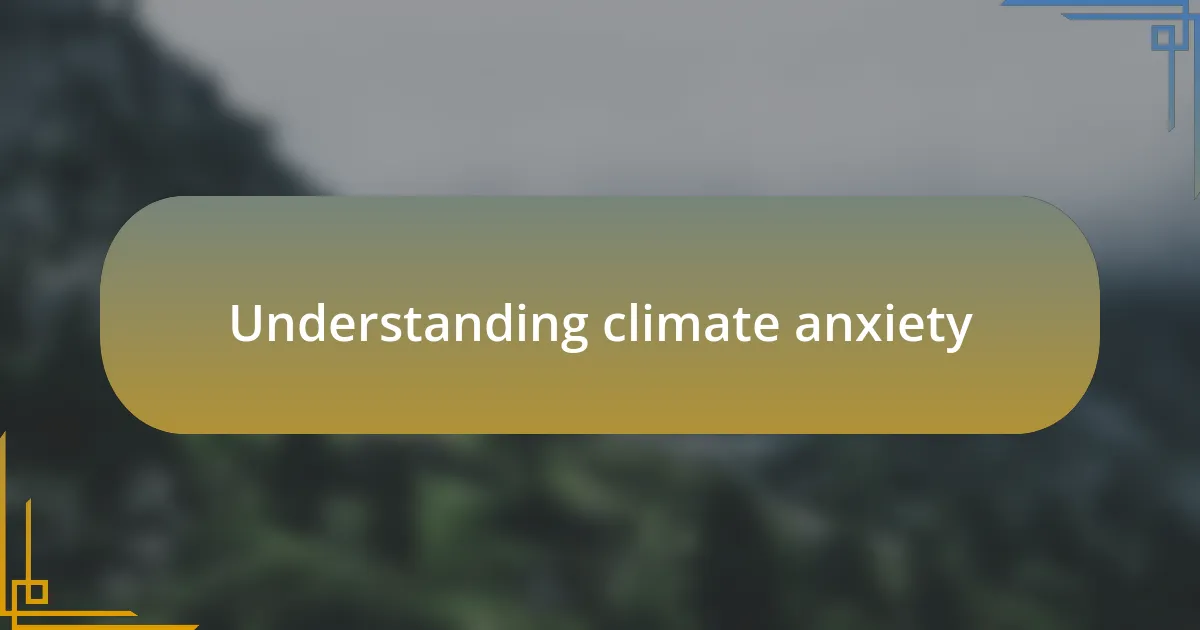
Understanding climate anxiety
Climate anxiety, a term that resonates more with me every day, is that overwhelming sensation of dread and helplessness regarding environmental destruction. I remember the first time I really felt it—it hit me like a ton of bricks as I watched a documentary about melting ice caps.Questions flooded my mind: What kind of world will my children inherit? Can I really make a difference?
As I delved deeper into the subject, I realized that this anxiety stems from a powerful awareness of our planet’s crisis—a constant loop of despair that can feel paralyzing. It’s unsettling to sit with the knowledge of climate change, watching the news every day and seeing more dire warnings about extreme weather events. This weight can be crippling, but acknowledging these feelings was a vital step for me. Have you felt that too?
The truth is, while climate anxiety can seem daunting, it often serves as a catalyst for action. When I shifted my perspective from despair to empowerment, I started channeling my energy into activism and education. I found community amongst like-minded individuals who also felt this anxiety, and together we discovered that understanding our feelings could ultimately ignite a passion for change.
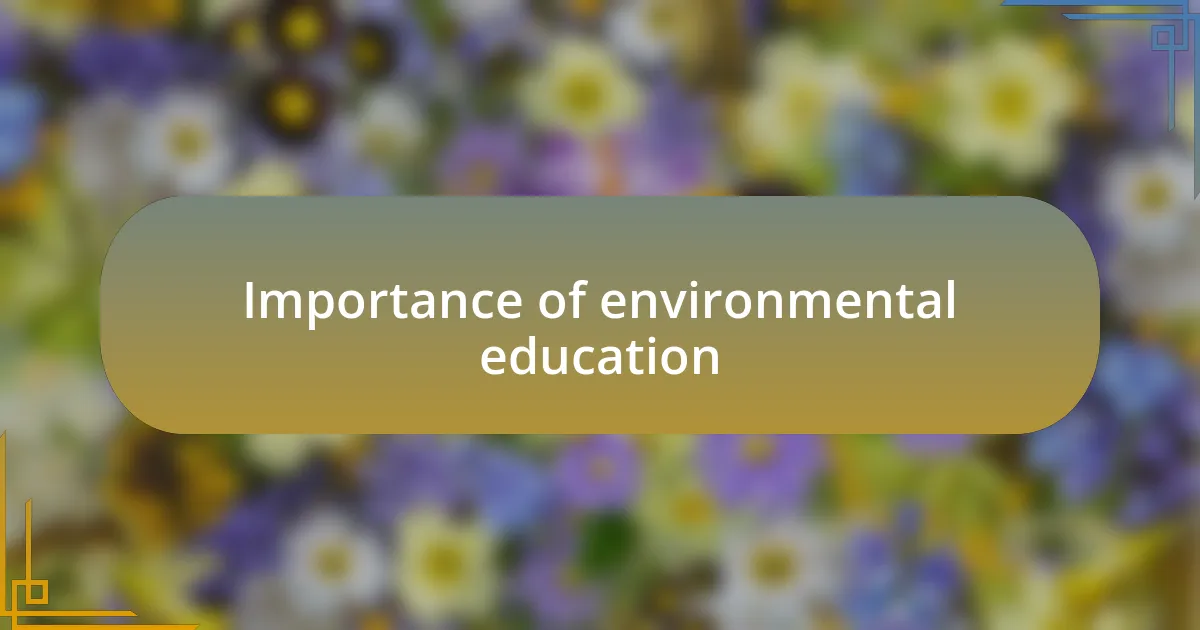
Importance of environmental education
Environmental education plays a crucial role in shaping how we understand and respond to the challenges posed by climate change. I remember teaching a group of young students about recycling, and their eyes lit up with excitement as they connected the dots between individual actions and their impact on the planet. This moment highlighted for me how education can transform apathy into responsibility.
Understanding environmental issues through education empowers individuals to think critically about their choices. I often reflect on my own journey; after attending a workshop on sustainable living, I realized that mere awareness wasn’t enough. It was the actionable strategies and community support that allowed me to feel equipped to make a tangible difference.
Moreover, fostering an educated public can lead to collective action, driving systemic change. I often ask myself, what kind of future do we want to create? When communities come together with a shared understanding of environmental challenges, they can advocate for policies that prioritize sustainability. It’s fascinating how knowledge can unify us, isn’t it?

Practical strategies for reducing anxiety
Taking control of my anxiety about climate change started with embracing small, manageable actions. I found that dedicating just 15 minutes a day to positive environmental actions, like planting herbs in my garden or participating in local clean-up events, shifted my focus from fear to hope. It’s incredible how these little steps can create a sense of agency and purpose.
I also discovered the soothing power of connecting with nature. On days when my anxiety spiked, I would go for walks in my local park, breathing in the fresh air and observing the beauty around me. I often think, how can something as simple as a stroll under the trees reduce my stress? It’s as if nature has this innate ability to ground us, reminding us of the bigger picture beyond our worries.
Another practical strategy was engaging in mindfulness and meditation. I started integrating short mindfulness sessions into my routine, focusing on my breath and making space for gratitude. I still remember one session where I consciously let go of my worries about the future, concentrating instead on the present moment. I often ponder, wouldn’t it be amazing if more people made this a part of their daily lives? These practices not only calm the mind but also nurture a deeper appreciation for the environment we’re striving to protect.
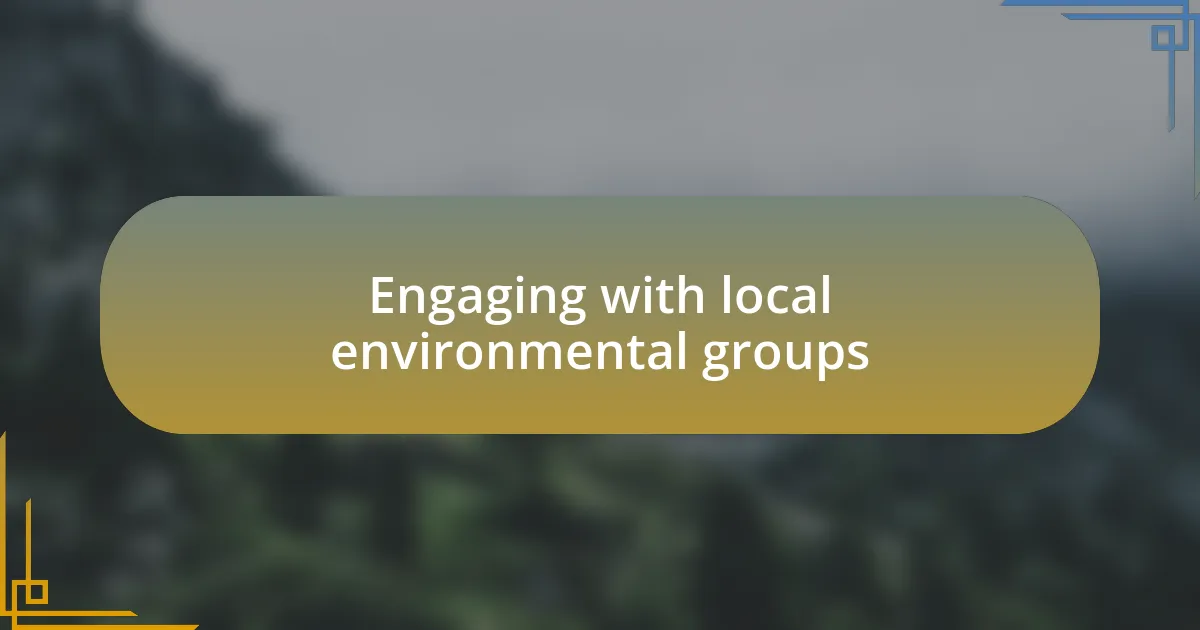
Engaging with local environmental groups
Engaging with local environmental groups has been a transformative experience for me. I remember my first meeting; I walked in feeling nervous but soon found myself surrounded by passionate individuals who shared my concerns. It made me realize that I’m not in this alone. Joining their conversations helped me feel valued and motivated, reminding me that collective action can bring about real change.
The friendships I’ve formed within these groups have been invaluable. I often reflect on the workshops we hosted, where we brainstormed creative solutions for reducing plastic use in our community. Standing among like-minded people, sharing ideas, and taking animated notes made me feel like part of something larger than myself. Isn’t it uplifting to know there are others who not only understand your worries but also want to work toward solutions together?
Through volunteering, I’ve learned that every small effort counts. Participating in local initiatives, whether it’s tree planting or environmental education programs, allowed me to witness the immediate impact of our work. I vividly recall the day we planted a community garden; watching those seeds take root was a powerful reminder that hope can blossom in the most unexpected places. How rewarding it is to be part of a community that actively nurtures the planet!
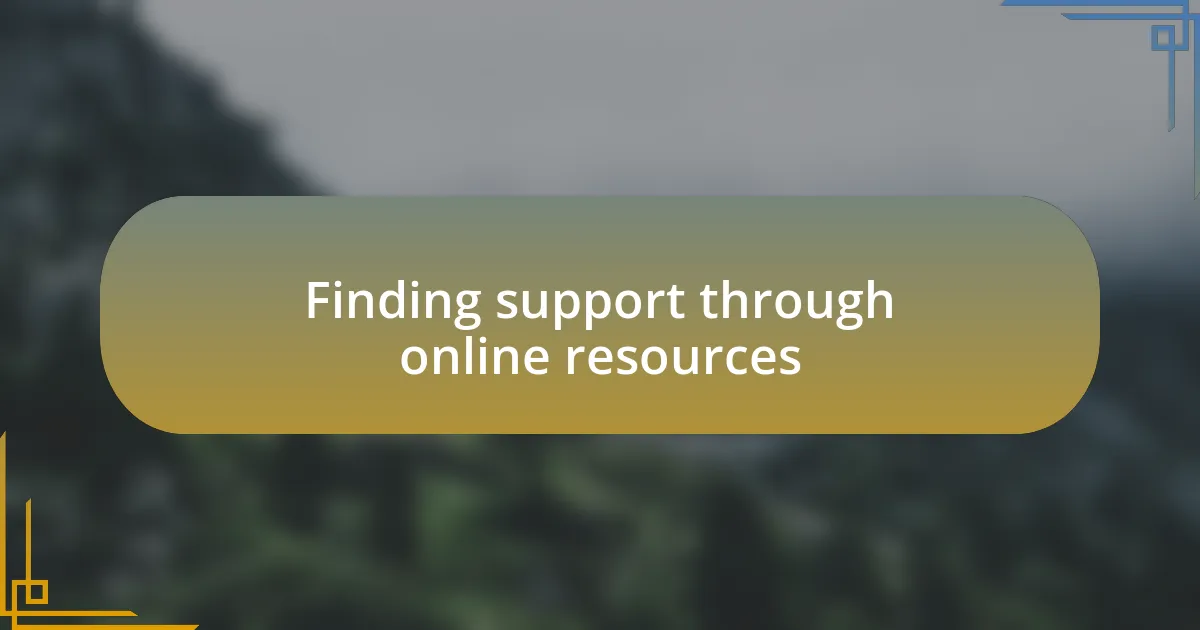
Finding support through online resources
Finding support through online resources has played a crucial role in my journey to manage climate anxiety. During a particularly overwhelming period, I stumbled upon a forum dedicated to environmental concerns. Sharing my feelings there was liberating; it was astonishing to read countless stories from others who also felt anxious about the state of our planet. Have you ever felt a sense of relief just knowing that others echo your worries?
I’ve found that social media platforms can also be a double-edged sword. While they can amplify fears, they also offer access to communities brimming with positivity and proactive discussions. One day, I participated in a live webinar that focused on climate solutions. Engaging with experts and friends in real-time felt like a virtual hug in a time of uncertainty. It often amazes me how a simple click can lead to meaningful connections and shared motivation to take action.
Additionally, apps that promote mindfulness and stress reduction have become instrumental for me. I remember downloading one that offered climate-related meditations. It helped me shift my perspective from anxiety to proactive hope. How incredible is it that technology can provide solace alongside information? In moments of distress, these resources ground me and remind me that action, no matter how small, is within reach.
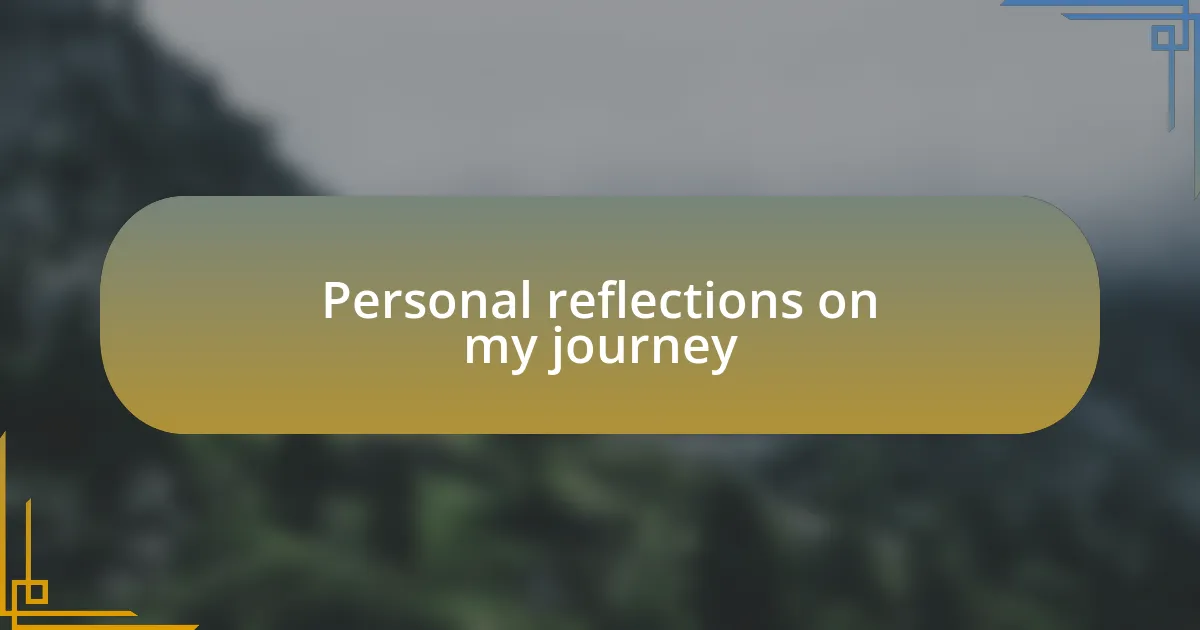
Personal reflections on my journey
Reflecting on my journey, I often found myself wrestling with the heavy weight of climate anxiety. I vividly recall a day when I sat in my garden, feeling utterly helpless as news of environmental disasters flooded in. Suddenly, a butterfly fluttered by, and in that moment, I realized how deeply interconnected everything is. It struck me: if nature could survive and thrive, maybe I could find my way forward too.
As I embraced my feelings, I discovered the power of small, consistent actions. I remember the first time I decided to incorporate sustainable practices into my daily routine. Swapping out single-use plastics for reusable ones felt like a victory, even if it was just a small step. This shift ignited a spark within me, transforming my anxiety into a drive for positive change. Isn’t it fascinating how taking action, no matter how minor, can reshape our emotions?
Amidst all this, I also learned the importance of gratitude. Journaling became a therapeutic outlet, helping me focus on what I cherished about the natural world. Writing down my observations in nature fostered a sense of appreciation and connectedness. Wasn’t it remarkable how this simple practice shifted my mindset from despair to hope? Each moment recorded became a reminder that there’s still beauty and resilience in our planet, motivating me to keep advocating for a brighter future.